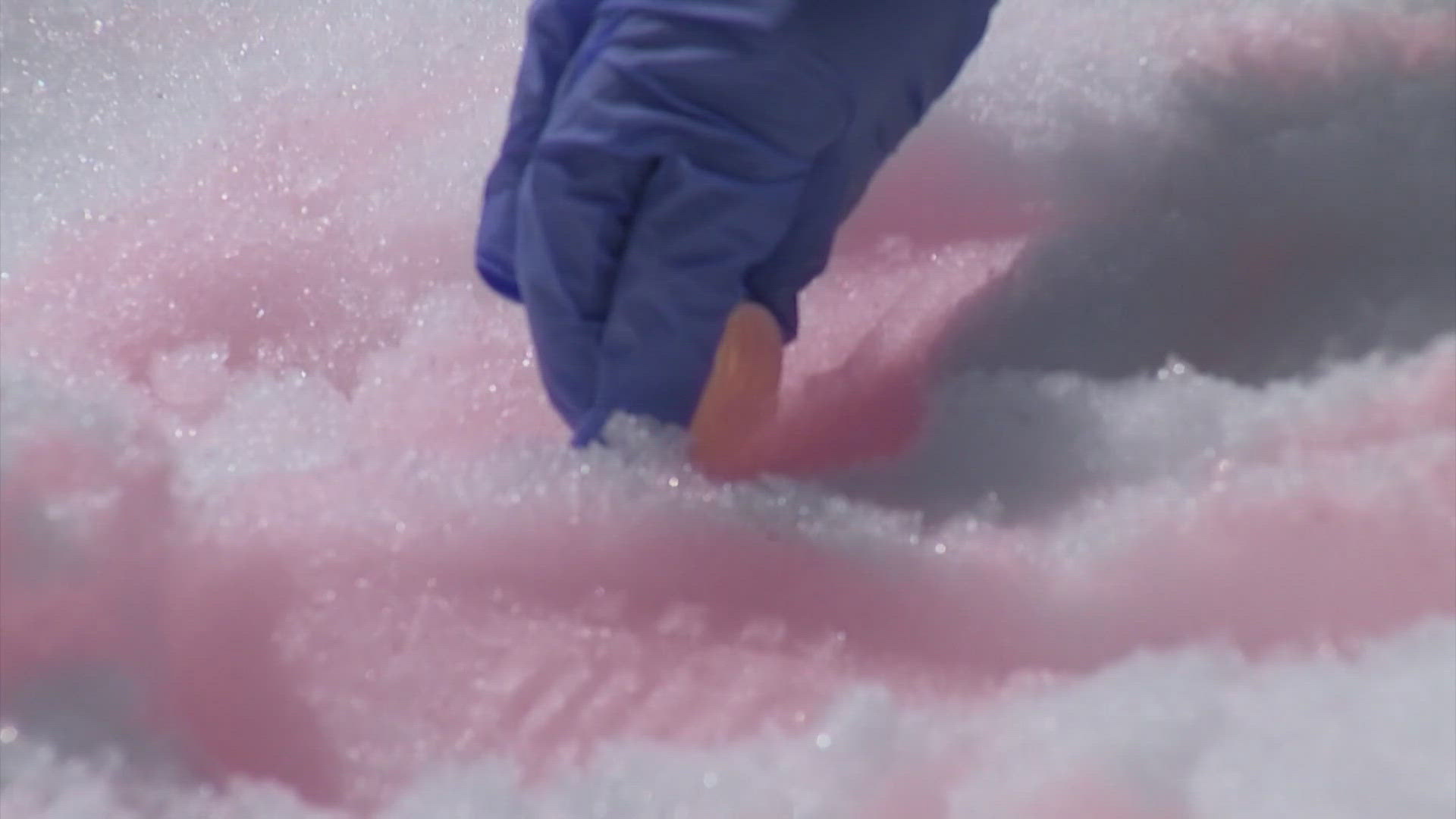SEATTLE — Researchers and volunteers are working to gather and test samples of algae blooms often referred to as "pink snow" to learn more about its life cycle. In time, that data could be used to understand more about how the algae could be impacted by climate change - or the role it might play as temperatures warm.
On a sunny, cool day in the North Cascades, researchers hiked around an alpine lake to find samples of algae that look like pink-colored snow. Recent days had brought a fresh coat of actual snow -- and they used shovels and boots to brush aside the top layer, revealing light red underneath.
"I'm just moving aside the snow that gathered the last two days," said Robin Kodner, PhD., a professor with Western Washington who has been studying the algae for years, as she uncovered a patch of "pink snow."
Kodner said there has been renewed research interest in snow algae because of its connection to glacier melt, which is of greater concern as the climate warms. At this point, Kodner said it is too early to make any assessments about snow algae's potential contributions to climate change or how it could be affected by warming, but the data being collected by a program called the Living Snow Project could help answer those questions.
"To understand if they're changing, you need to understand how they reproduce, how they grow, so you need to know about biology," Kodner said. "So as a biologist, that's the role I play in this space of research; how to understand how the algae are doing, how they respond, how the rate of photosynthesis impacts how they grow, how they bloom, whether you see a little bit of pink or a lot of red."
Because this form of snow algae is tcpink to red, it absorbs sunlight- and when positioned on a glacier, can make it melt more quickly. This is of concern in Washington, where they serve as an important water resource. But Kodner said there is very limited historical data on snow algae blooms, and scientists still need to understand how they work, where micro-habitats exist, characteristics of photosynthesis and how they interact with their environments -- before they can make predictions or other determinations about the algae's future.
"We're trying to establish baselines now so we understand where we are now and unfortunately this is research that takes a lot of time but in five years, ten years, we'll have an understanding about if we see changes year to year," Kodner said.
Kodner and researcher Brooke Weigel, PhD., alongside Living Snow Project program coordinator Clare Hanneman, put samples of the algae inside a machine to graph rates of photosynthesis. Along with in-field work, they rely on volunteers with the Living Snow Project to send in samples of red and pink snow wherever they see them. It allows researchers to access diverse populations of the algae for testing.
"The power of using the community who are kind of just going all over the place really helps us create a robust, long-term data set about snow algae," Kodner said.
The algae are often found near alpine lakes. Researchers said there may be something about the length of time with cold temperatures, in which the algae appear to thrive.
While there is interest in the intersection with glacier melt, researchers want to know more about the algae themselves. Recent research near the Mount Baker Ski area revealed a previously unidentified species, and the algae function within an entire snow ecosystem among other organisms.
They're hoping to document more information about the algae while it is still thriving in the northwest - and hope more people will get involved in the process of submitting snow samples.
"I'd kind of like to stress how accessible it is because I kind of think it can feel like something you can only do if you're [in hard to access areas] or like to go hiking all the time," Hanneman said. "You can find snow algae on the side of the road, you don't have to be an intense, outdoors person to participate and you don't even have to have a sample kit, you can use our app."
Anyone can volunteer to submit samples to the project. To learn more about how to do so, click here. To read a recent study in relation to this work, click here.

